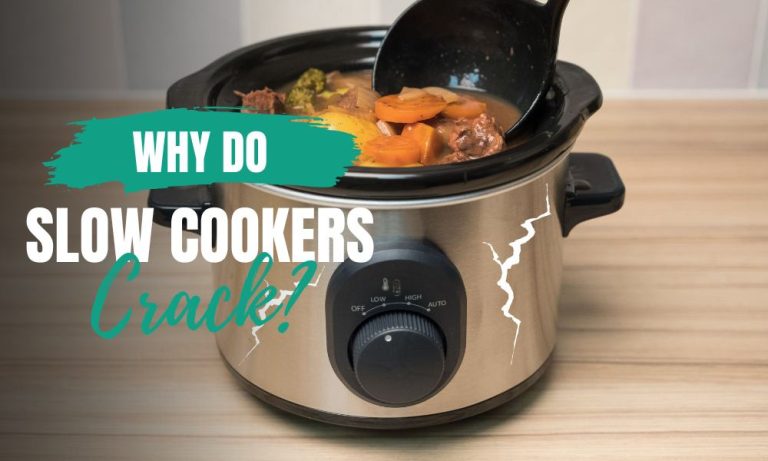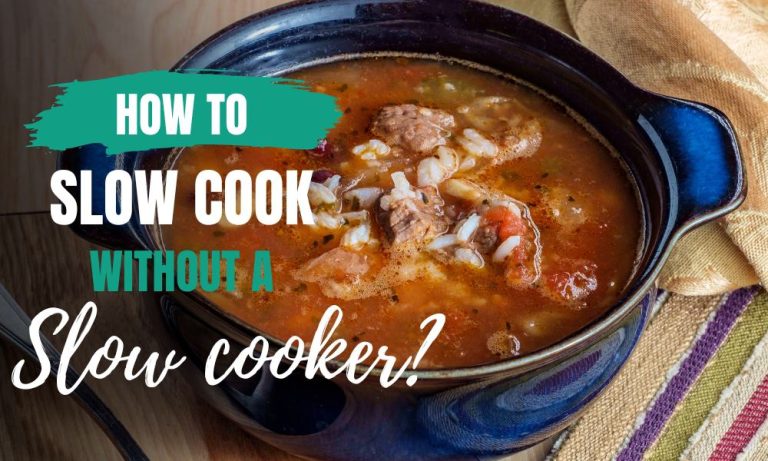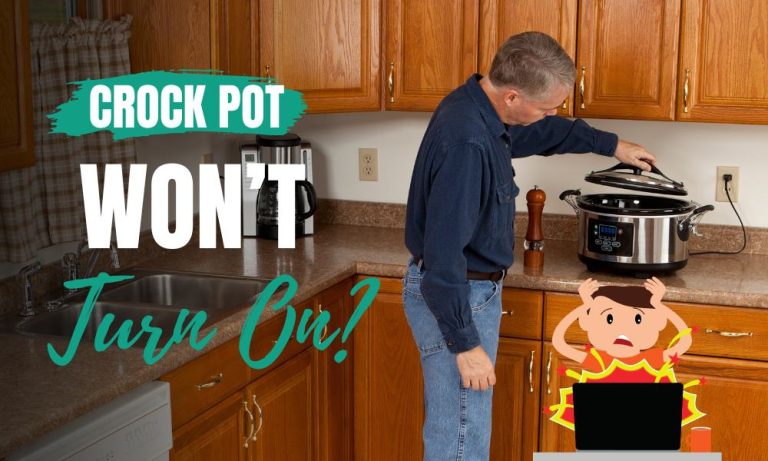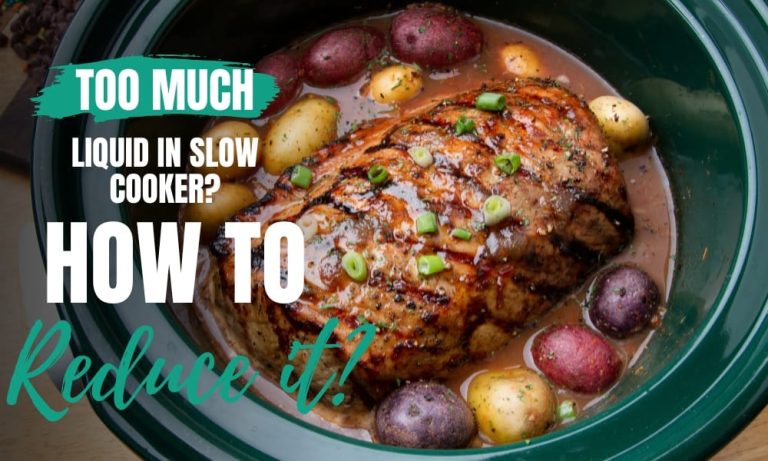Does A Slow Cooker Need Water? Can You Dry Cook?
Slow cookers are a great way to make delicious meals with minimal effort. But before you get started, it’s important to know how to use your slow cooker correctly and safely. That’s why it’s important to know the answer to the question: Does a slow cooker need water?
This blog post will examine what you need to know about slow cooking and water safety. We’ll also provide a comprehensive guide for using water in a slow cooker and tips for avoiding potential problems. So read on to find the answer:

Contents
The Science Behind Does a Slow Cooker Need Water?
When it comes to slow cooking, there are a few scientific principles at play. It’s important to understand the basics of slow cooking to use your slow cooker safely and get the most out of your recipes.
First, it’s essential to understand that slow cookers work by trapping heat in a tightly sealed container. This means the food is cooked at a lower temperature for longer. As the temperature rises, the proteins in the food break down and release their juices, forming a flavorful sauce.
The second scientific principle at work is evaporation. When heated, liquids turn into vapor and escape from the slow cooker. This process is accelerated when liquid is added to the slow cooker, as it will turn to vapor faster. If there is no vapor without water or other liquids, and the ingredients may dry out during cooking.
Finally, condensation plays an important role in slow cooking. When steam escapes the slow cooker, it condenses on the lid and drips back into the food. This helps to keep the food moist and prevent it from drying out. Without sufficient moisture, food will overcook and become dry and tough.
In short, the liquid is essential to the success of slow cooking. It helps keep food moist and ensures that all the flavors combine to create a delicious meal. Understanding these scientific principles will help you get the most out of your slow cooker.
The Different Methods You Can Try

Slow cookers offer a variety of cooking methods to suit the needs of any recipe. Some methods may require more or less water than others, so it’s important to know what type of cooking method you’re using before adding liquid. It will also help you get the answer to the question: Does a slow cooker need water?
Simmering
One popular method is simmering. This method is used for stews and soups, and it requires the slow cooker to be set to low heat with the lid off. This method adds a small amount of water to the pot, just enough to cover the bottom without fully submerging the ingredients.
Steaming
Another common method is steaming. This method uses a trivet, which allows you to add enough water to the slow cooker to create steam. The lid should remain on during cooking, and the slow cooker should be set to high. The amount of water required for this method depends on the size and shape of your slow cooker and the size of your food.
Braising
Braising is also an option. This method involves adding liquid to the slow cooker until it almost covers the ingredients. The slow cooker should be set to low heat, and the lid should remain on while cooking. The amount of liquid required for this method depends on how thick or thin you want your sauce.
Slow Roasting
Slow roasting is also possible in a slow cooker. For this method, you can use a small amount of liquid, such as wine or broth, or even no liquid. The slow cooker should be set to high heat, and the lid should remain on during cooking.
Slow Boiling
The last common method is slow boiling. This is often used for soups, stews, and braised dishes. You need to add enough liquid to cover the pot’s ingredients completely. The slow cooker should be set to high heat, and the lid should remain on during cooking.
By understanding the different cooking methods in a slow cooker and how much liquid they require, you can ensure your dishes turn out perfectly every time.
So, How Much Water Should I Use?

Knowing exactly how much water you need when using a slow cooker is important. Too much, and you’ll be left with a watery, flavorless dish. It would help if you had more and may have a dry, overcooked result.
Regarding slow cooking, there are two main methods:
- Moist Heat
- Dry Heat
Moist heat requires liquid, whereas dry heat does not. Generally speaking, most recipes call for a bit of liquid for moisture and flavor. Depending on the size of your slow cooker, the amount of liquid you need can vary greatly.
For most slow-cooked dishes, the general rule is to use at least 1 cup of liquid per 4 quarts of slow cooker space. For example, if you have a 3-quart slow cooker, you’ll want to use at least 3⁄4 cups of liquid. This should provide enough moisture for even cooking without having too much liquid that would dilute flavors or make the dish overly wet.
If the recipe calls for more liquid than this, it might be best to increase the amount slowly. Adding too much liquid all at once can lead to an over-saturated dish. When adding additional liquids, start small and stir in increments until you get the desired consistency.
Remember that your slow cooker will also produce some liquid from its steam. This is why starting with minimal liquid is important and adjusting accordingly as needed. If your dish isn’t as moist as you’d like, add a little extra liquid and let the slow cooker do it.
What If I Use Too Much Water?
If you have added too much water to your slow cooker dish, don’t panic. It’s easy to fix and doesn’t require a total redo of your meal.
If the dish has been cooking for a few hours, the extra liquid will likely evaporate, and the meal should still be edible. However, if the dish has been cooking for a while and is swimming in liquid, you can easily rectify this by adjusting the lid on your slow cooker.
Loosening the lid releases more moisture from the slow cooker, evaporating some excess liquid. This will also help to raise the temperature of your dish, thus speeding up the cooking process.
If you are left with too much liquid after several hours of cooking, you may need to add some thickening agents. Cornstarch or tapioca starch works great as a thickening agent in slow-cooker meals.
Dissolve the starch in a small amount of cold water before stirring it into your dish. This will help absorb any excess liquid and thicken the sauce in the dish.
Remember that too much liquid can result in overcooked vegetables, so use just enough water to avoid this issue. Fortunately, it’s easy to adjust the amount of liquid if you have added too much by raising or lowering the lid or adding a thickening agent.
Can I Use Other Liquids Besides Water?

Yes, you can use other liquids besides water in your slow cooker. The most popular liquids you can use include broth, beer, wine, and juice. Broth is a great choice because it adds flavor to the dish, while beer, wine, and juice can all be used for more complex flavors.
When adding other liquids to your slow cooker, ensure you are using enough to cover the ingredients. If you are using a larger cut of meat, such as a roast, it is important to ensure enough liquid to submerge the meat to cook evenly.
Depending on the size of your slow cooker and the number of ingredients you are cooking, you may need to add more liquid throughout the cooking process.
It is also important to note that these other liquids will affect the cooking time. Generally speaking, using beer or wine will require a longer cooking time, whereas juice may require a shorter cooking time. Watch the food as it cooks and adjust the cooking time accordingly.
Regarding liquids in your slow cooker, the possibilities are endless! Experiment with different combinations to find out what works best for your recipe. With the right balance of liquids, your slow cooker dishes can turn out deliciously every time!
Can I Cook Off Liquid in My Slow Cooker?
The simple answer is yes, you can cook off the liquid in a slow cooker. This can benefit certain dishes as it can concentrate the flavor and thicken sauces. It’s especially useful when making something like a stew, chili, or gravy, where you want the liquids to thicken up and the flavors to meld together.
When cooking off the liquid in a slow cooker, you will want to reduce the liquid you use initially. Typically, when cooking with a slow cooker, you want to ensure the food is completely submerged in liquid so it can cook evenly. When you are looking to cook off some of the liquid, however, you will want to reduce the initial amount so that there is still enough for the food to cook in but not too much that it won’t evaporate off.
Once you have added the reduced amount of liquid, set your slow cooker on high heat and leave the lid slightly ajar so that some of the steam can escape. This should allow some liquid to evaporate while cooking the food evenly. You may need to adjust your slow cooker setting to ensure that the food doesn’t burn and all the liquid evaporates off.
Remember that when cooking off the liquid in a slow cooker, you want to leave it promptly, which can cause the food to burn. Check your food periodically throughout the cooking process to ensure it is not burning, and remove it from the slow cooker once all of the liquid has evaporated.
What About Dry Cooking in a Slow Cooker?

Yes, cooking without any liquid in a slow cooker is possible but not easy. Dry cooking allows flavors and textures to be preserved in the food as it is cooked over long periods. The slow cooker doesn’t need any water to make dry cooking possible, so don’t worry about adjusting recipes or settings to make this work.
When dry cooking in a slow cooker, using a small amount of fat is important. It will compensate for the absence of water. This will also help to add flavor and moisture to the food and prevent it from drying out.
To get the best results, add the fat directly to the bottom of the slow cooker before adding the ingredients you wish to cook. It’s also important to keep an eye on the food while cooking and stir it periodically. This will ensure that all the food cooks evenly and nothing gets too dry.
In addition to adding flavor and moisture, fat also helps create steam, which is essential for keeping food moist during cooking. Enough fat is important to avoid overwhelming the dish or becoming overly greasy. A tablespoon or two of oil or butter should suffice for most dishes.
When dry cooking with a slow cooker, always remember to cover the slow cooker with its lid to ensure that the steam created by the fat is not lost. This will help lock in moisture and provide consistent cooking temperatures throughout the dish. To further help preserve moisture, try adding a few drops of liquid to the slow cooker before beginning the cooking process.
Dry cooking in a slow cooker can be an easy way to get great results without worrying about too much liquid in your dish. So, go ahead and give it a try!
FAQs
Final Thoughts
Slow cookers can be a great way to make delicious, hearty meals without spending hours in the kitchen. They require some liquid to operate properly, but there are many ways to customize your slow cooker and get creative with your ingredients.
Experimenting with different liquids and dry cooking techniques can help you find the perfect slow-cooker meal for your family. Additionally, when choosing the amount of water to add to your slow cooker, consider the amount of food being cooked; remember that if you use too much liquid, your meal may become soggy or bland.
The above guideline will help you get an answer to the question Does a slow cooker need water?

Mery Webber
Mery Webber, the founder of Kitchen Aims, is a passionate home cook with extensive experience in the kitchen appliance industry. Through her blog, she aims to share her knowledge and help readers create the perfect kitchen.






